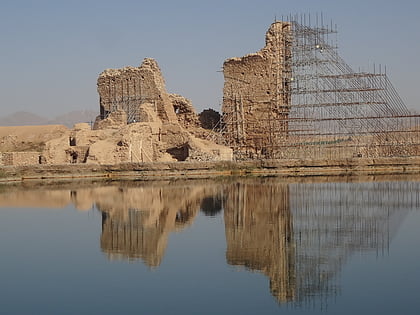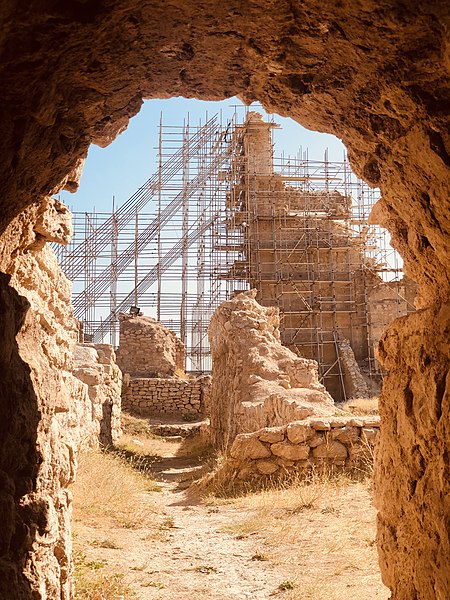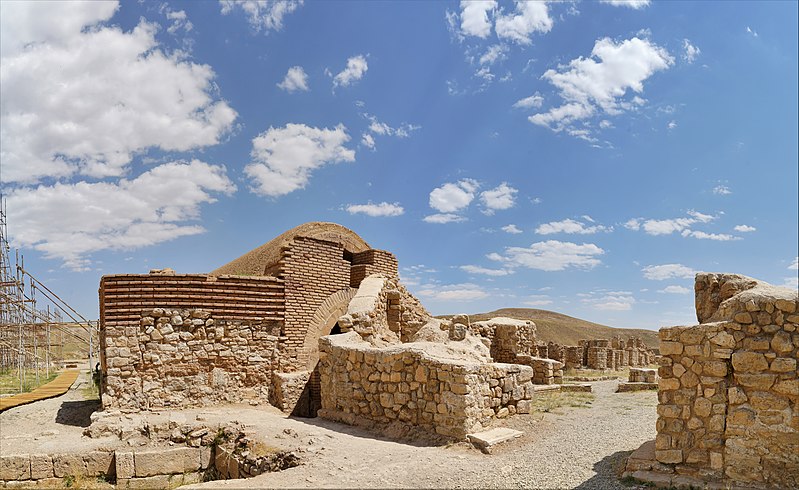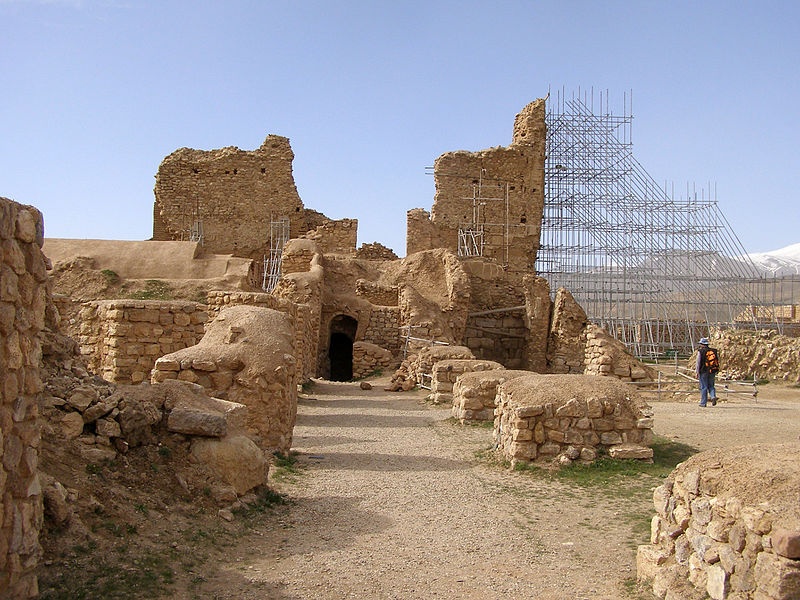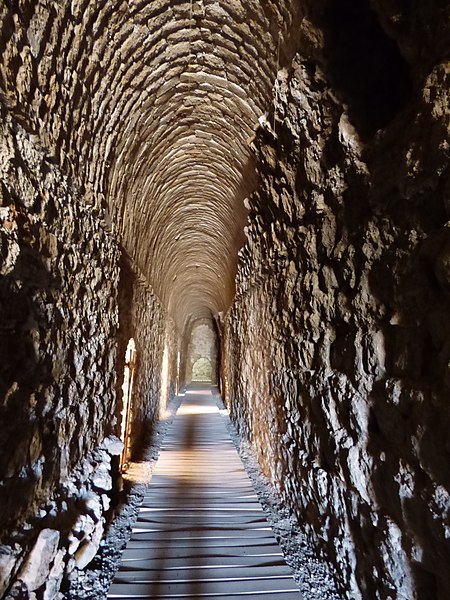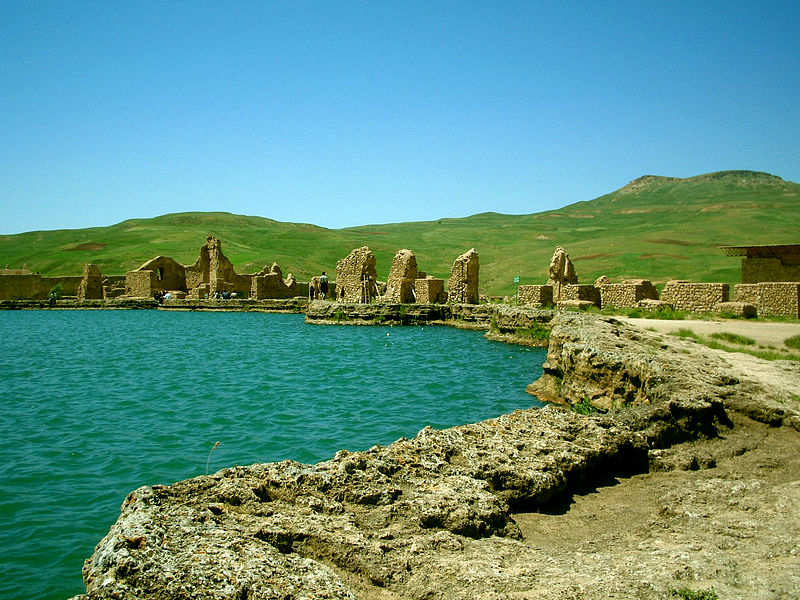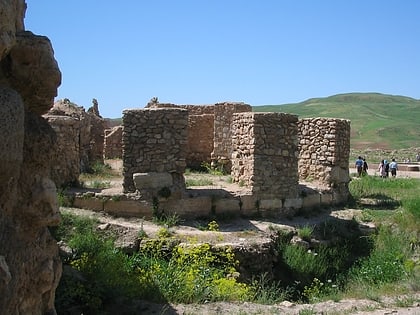Takht-e Soleymān
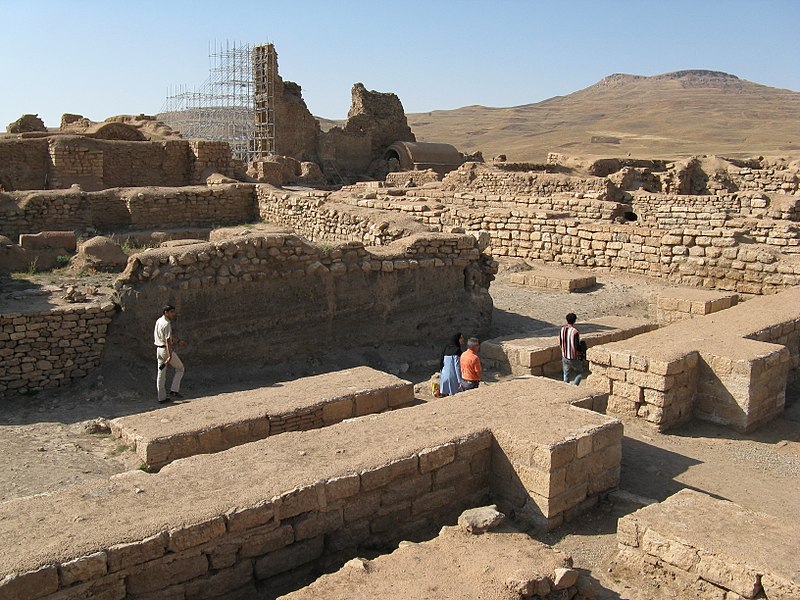
Facts and practical information
Takht-e Soleymān, also known as the Throne of Solomon, is an ancient archaeological site in northwest Iran that offers a window into the nation's deep historical and cultural roots. This enigmatic fortress-like retreat, nestled in the West Azerbaijan province, is a testament to the architectural prowess and spiritual significance of the various empires that once flourished in the region.
The site, which dates back to the 1st millennium BC, served as a sanctuary and imperial city during the Sassanian period. It is characterized by its unique combination of natural and man-made features, including a lake fed by a natural spring believed to hold sacred properties. The complex was a center for Zoroastrian worship, where rituals and ceremonies were performed in the presence of sacred fire, an element deeply revered in Zoroastrianism.
Takht-e Soleymān was further enhanced under the Sassanians, who constructed grandiose buildings, temples, and palaces around the lake, thus transforming it into a royal citadel. The site's strategic fortifications and its location amidst the mountainous landscapes added to its aura of invincibility and grandeur.
The ruins that visitors can explore today include the remains of a Zoroastrian fire temple, which housed one of the three Great Fires of the Sassanian religion, and the Anahita Temple, dedicated to the water goddess. The archaeological excavations have uncovered a wealth of artifacts that shed light on the sophisticated art, culture, and religion of the period.
Takht-e Soleymān – popular in the area (distance from the attraction)
Nearby attractions include: Adur Gushnasp.
Frequently Asked Questions (FAQ)
When is Takht-e Soleymān open?
- Monday 24h
- Tuesday 24h
- Wednesday 24h
- Thursday 24h
- Friday 24h
- Saturday 24h
- Sunday 24h
